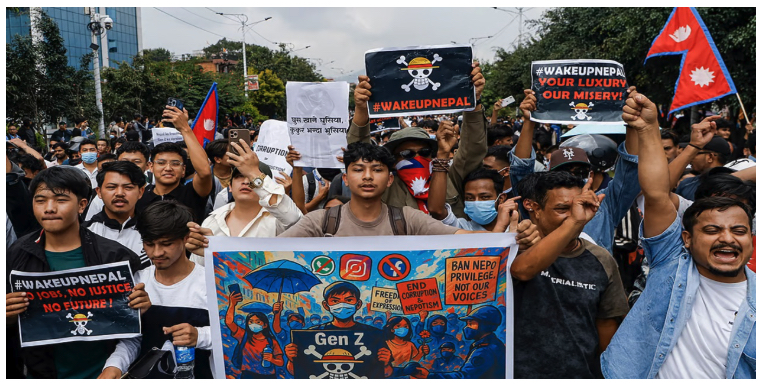NEPAL, September 18, 2025 (VIF India by Prof. Hari Bansh Jha): Until the dawn of September 8, few Nepalis imagined that their country stood at the edge of a historic rupture. The streets of Kathmandu appeared calm, shops were open, and people went about their daily routines. Yet within hours, the atmosphere changed dramatically. A group of young demonstrators identifying themselves as “Gen-Z” converged in the capital. What initially looked like a modest gathering soon turned into a storm of unrest. Protesters forced their way into the parliament building at Baneshwar, and violent confrontations left behind a grim trail of casualties and destruction of both public and private property.
The wave of anger quickly engulfed the nation’s central institutions. The Singh Durbar complex—home to the Prime Minister’s office and several ministries—was set ablaze. The Supreme Court building and the presidential residence at Shital Niwas also came under attack. Residences of senior leaders from both ruling and opposition parties were targeted. Police posts and government offices were torched, while shopping malls, hotels, and homes in several districts met a similar fate. The material and human costs of the upheaval are staggering. The tourism sector alone is estimated to have lost nearly US$ 275 million, while more than 10,000 people lost their jobs almost instantly. The destruction of government buildings and public infrastructure will take years to repair, placing new burdens on taxpayers. Yet the most painful losses are the lives cut short and the collapse of public confidence in state institutions. At a time when Nepal urgently requires stability and development, renewed political uncertainty has once again darkened the horizon.
Much more at source.
https://www.vifindia.org/2025/september/18/The-Gen-Z-Uprising-in-Nepal
Video: https://youtu.be/IyxSqeFrlp0?si=No3Awrho1tIeAlX1
A daily summary of world news for Hindus and non-Hindus alike

